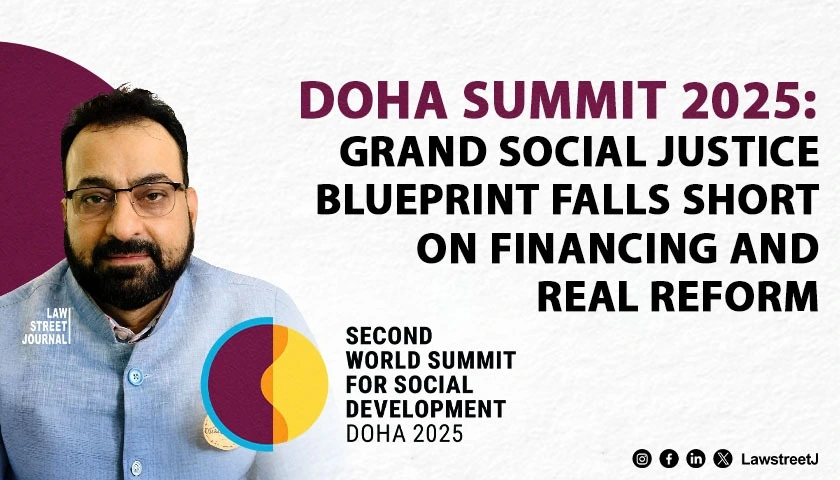NEW DELHI: While the World Meteorological Organization confirmed that 2024 was the warmest year on record, with the global average surface temperature reaching 1.55 °C, ± 0.13 °C above the 1850-1900 baseline, it is important to note that a year or two of warmer temperatures does not necessarily indicate that we have breached the long-term temperature thresholds set out in the Paris Agreement on climate change. However, from here on, every fraction of a degree in warming matters, especially for the state of the glaciers and the fate of humankind. As long as there is a balance between the existing ice masses in the glaciers and surrounding temperatures, the ice that melts in the summer and the ice that is gained in the winter remain in equilibrium.
The glacier is stable. However, this equilibrium has been disrupted for decades now due to the rising temperatures in mountainous regions. The receding of glaciers presents one of the most pressing environmental challenges of our time, with severe consequences for water security, disaster risk, and global sea levels.
Glaciers, the frozen reservoirs of fresh water, are receding at an alarming rate worldwide. This phenomenon, driven largely by climate change, threatens not only the environment but also millions of people who depend on glaciers for water, agriculture, and energy. As glaciers shrink, their impact extends beyond the mountains, influencing sea levels, weather patterns, and entire ecosystems. Glaciers form over centuries through the accumulation and compression of snow. However, the current warming trend has caused an accelerated loss of glacial mass. According to reports from the Intergovernmental Panel on Climate Change (IPCC), the global average temperature has risen by approximately 1.1°C since pre-industrial times, with higher elevations experiencing even greater warming.
Global Glacier loss
The melting of glaciers contributes to rising sea levels, which threaten coastal cities and small island nations. Additionally, the loss of glacial ice affects water cycles, leading to erratic precipitation patterns, flash floods, and droughts. The Himalayas, Andes, Alps, and Arctic regions have all witnessed significant glacial shrinkage in the past few decades, indicating a universal crisis. The Himalayas, known as the "Third Pole" due to their vast ice reserves, are crucial to the water security of South Asia. They feed major river systems, including the Indus, Ganges, and Brahmaputra, which sustain nearly two billion people across India, Pakistan, Nepal, Bhutan, and Bangladesh.
Also Read: Promises and Perils of Climate Negotiations
According to a recent study, the Himalayan glaciers could lose up to two-thirds of their ice by the end of this century if global temperatures continue to rise at current rates. The consequences of glacial retreat in South Asia are severe because millions rely on glacial melt-water for drinking and irrigation, especially in the dry months. A reduced water supply threatens food security and livelihoods. The melting glaciers form unstable lakes, which can burst and cause catastrophic flooding. Many South Asian countries depend on hydropower generated from glacial-fed rivers. Reduced water flow can hinder electricity production, leading to power shortages.
Legal Frameworks and Policies to Combat Glacier Melting
To commemorate the World Water Day 2025 and the 17th foundation day of India Water we organized a high level policy dialogue on ‘Fostering Collaborative efforts to protect receding Glaciers’ in collaboration with World Meteorological Organization and Mountain Partnership of the United Nations. The speakers were from the Government of India, WMO, IWRA, FAO, UNECE and ICIMOD. The hon’ble minister of state of Jalshakti in his chair address highlighted that the Ministry of Jal Shakti has been actively working to address the challenge of receding glaciers. In 2023, they established the Centre for Cryosphere & Climate Change Studies at the National Institute of Hydrology in Roorkee.
This center is dedicated to managing snow and glacier resources and addressing concerns about future water availability. Sh. Bharat Lal Secretary General of the National Human Rights Council of India in his keynote speech articulated that in a country like India with 1.4 billion population water security is national security. Paucity of water hinders socio economic development. India is preserving forests as carbon sinks and involving communities for collective action. Other speakers also highlighted various recommendations to preserve and conserve our receding glaciers.
Internationally, several agreements and laws address climate change, indirectly targeting glacial recession. Some of the key frameworks including the Paris Agreement (2015) which is a legally binding international treaty that aims to limit global warming to below 2°C, ideally 1.5°C. Countries have committed to reducing greenhouse gas emissions, which drive glacier loss. United Nations Framework Convention on Climate Change (UNFCCC) encourages global cooperation in combating climate change and protecting vulnerable ecosystems. Montreal Protocol (1987) primarily aimed at reducing ozone-depleting substances, this treaty has indirectly slowed climate change and, consequently, glacier retreat.
At the national level, South Asian countries have begun adopting regulations. In 2017, the Uttarakhand High Court in India granted the Himalayan glaciers, rivers, streams, lakes, air, meadows and forests the same legal ‘rights as human beings’. The ruling aimed to ‘preserve and conserve’ the ‘glaciers including Gangotri and Yamunotri, rivers, streams, rivulets, lakes, air, meadows, dales, jungles, forests wetlands, grasslands, springs and waterfalls’ of the Himalayas. This case followed swiftly on the heels of an earlier decision to recognise the rivers Ganga and Yamuna as legal and living persons. Although the Ganga and Yamuna ruling has since been appealed to the Supreme Court, the Uttarakhand High Court’s decision to recognise the glaciers as legal persons in Uttarakhand remains unchallenged. India has the National Action Plan on Climate Change (NAPCC) includes the "National Mission for Sustaining the Himalayan Ecosystem" to monitor and address glacial melt. Other nations have also implemented policies to manage glacial lakes and enhance early warning systems to mitigate disasters.
Technological and Policy Solutions
To slow glacial retreat, a multi-pronged approach involving technology, policy, and community engagement is necessary. Some viable solutions have to be explored like strengthening commitments under the Paris Agreement and transitioning to renewable energy can limit global temperature rise. In regions like Ladakh (India), local innovations such as "ice stupas" help store winter water as ice for use during water scarce summer months. Satellite-based monitoring can provide early warnings of changes in glacial health, helping policymakers take preventive action. Planting trees in upstream regions can regulate temperature and reduce glacial melting rates. Improved irrigation techniques and efficient water use can mitigate the impact of reduced glacial melt-water. A global declaration of 2025 as the "Year of Glaciers" could serve as a powerful initiative to raise awareness and drive action. Similar to past international observances, such a designation would help governments, organizations, and researchers to collaborate on strategies to mitigate glacier loss.
Highlighting glaciers as a critical issue may attract more investments in research and conservation projects. Engaging communities through campaigns can promote behavioral changes, such as reducing carbon footprints and advocating for policy reforms. Such a declaration could push for stronger environmental commitments from nations with significant glacial reserves. However, a symbolic gesture alone is insufficient. Without concrete policies, robust legal frameworks, and dedicated climate action, the crisis of receding glaciers will persist. Sadly our approach is reactive instead of being proactive. This is why we need a comprehensive approach that blends adaptation and mitigation; scientific monitoring with community engagement; and localized resilience strategies to preserve these vulnerable ecosystems, water resources and the communities that depend on them
Conclusion
The melting of the ice is quite clearly the glaciers’ reaction to climate change. Key to save the Glaciers is strengthening the resilience of high-altitude vulnerable communities by developing early warning systems and investing in climate resilient infrastructure.14 In addition, integrating sustainable watershed management and establishing protected areas can help mitigate habitat degradation and preserve biodiversity across these vulnerable areas.15 Further, empowering communities through education and participatory planning, and further strengthening adaptive capacity, are equally important. Together, these actions form the backbone of a holistic and effective response to the accelerating impacts of glacier mass loss in this warming world. We have to focus on raising awareness, advocating for policy change, and facilitating actionable, sustainable measures to preserve glaciers. Undoubtedly, governments and agencies like UN, intergovernmental organizations, academia etc, and others have a strong commitment to the environment but it’s the people’s participation that makes all the difference. Engagement with partner organizations is vital for a tangible result on the ground and it is not just a top-down but also a bottom-up approach by sensitizing, incentivizing, and galvanizing stakeholders.
We have to bring the communities, civil societies, and state agencies together for integrated cross sectoral participation through cooperation, coordination, and convergence. While international agreements and national policies are steps in the right direction, more urgent and coordinated efforts are required. Designating 2025 as the "Year of Glaciers" could serve as a catalyst for change, but it must be accompanied by concrete actions, including carbon emission reductions, technological innovations, and stronger legal enforcement..Addressing this crisis requires a collective global response—one that recognizes the invaluable role of glaciers in sustaining life on Earth.
Disclaimer: The opinions expressed in this article are solely those of the author and do not necessarily reflect the views of LawStreet Journal.





![NHRC Directs for Screening Jail Inmate's Mental Health to Prevent Suicides and Improving Prison Environment [Read Press Release]](/secure/uploads/2023/06/lj_9709_073e2515-b572-4aae-bd78-72111faff52e.jpg)
![NHRC notice to Haryana police on threat to man for sharing 'anti-Rohingya' post on social media [Read Notice]](/secure/uploads/2023/08/lj_6103_NHRC_notice_to_Haryana_police_on_threat_to_man.jpg)








